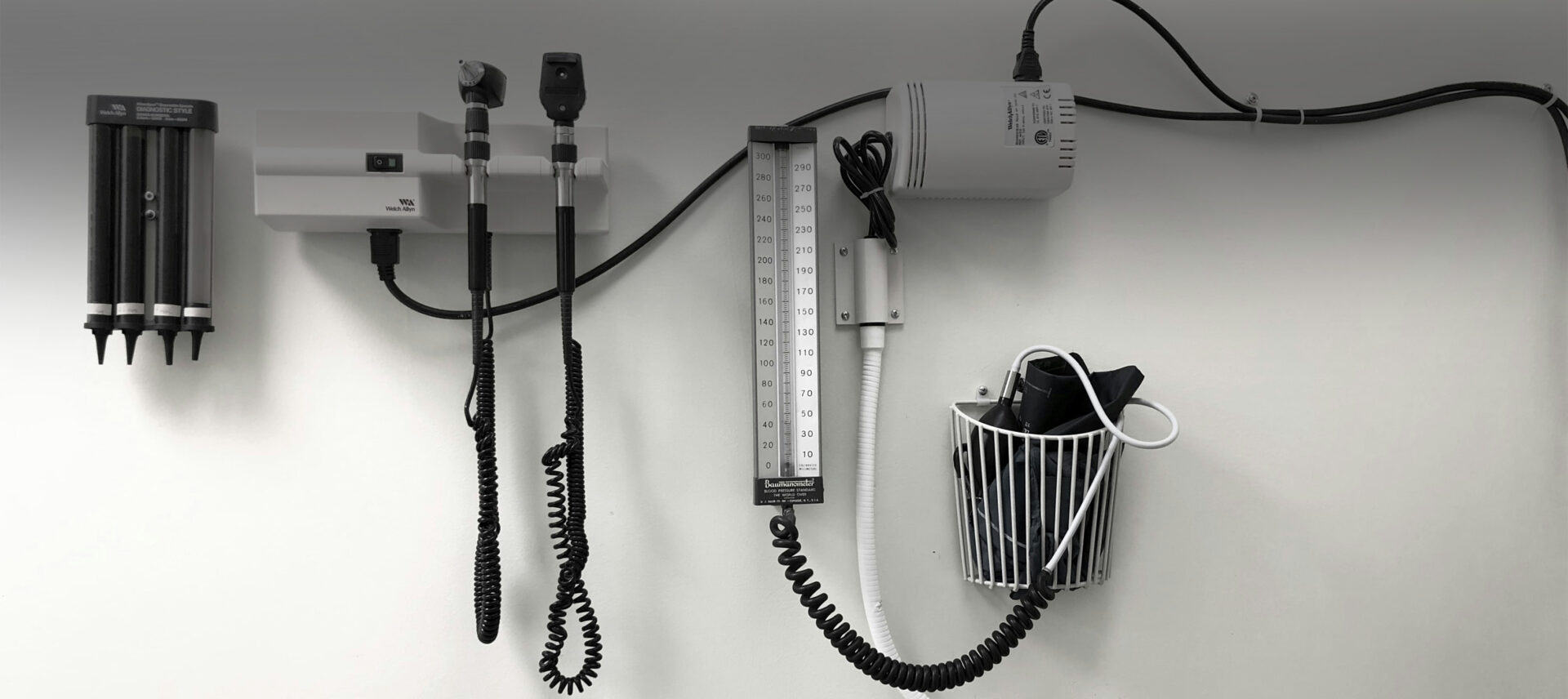
Article
Reality Check: What it Takes to Design and Launch a Successful MedTech Product
The medical device market is both highly competitive and highly regulated, and a good idea just isn’t enough. Learn what it really takes to develop MedTech products.
Bringing a medical device to market is a long and winding road filled with regulatory requirements, design tradeoffs, testing hurdles, and business infrastructure requirements. The full timeline can easily stretch into years if not decades. Total R&D development costs for a Class 2 510(k) product can range from $2 to 5 million. However, the total cost through regulatory clearance and production can be over $30 million and quickly escalate to over $75 million for more complex Class 3 PMA devices, per a 2010 MedTech survey.
That means if you’re a design leader at a startup (or if you’re a physician or inventor seeking to enter the MedTech market), you need more than a groundbreaking idea to get the ROI you’re hoping for. In addition, you’ll need to:
- Understand the overarching landscape in which your product will operate
- Research what your users truly want and need from your device
- Work within all the pertinent regulatory constraints while simultaneously differentiating your product from the competition
It’s not easy — but it is achievable, especially if you engage a knowledgeable design firm that’s experienced in the unique challenges of designing highly regulated products. To that end, here’s a look at what you’ll need to do before, during, and after product development to give your medical device the very best chance of success.
Do Your Due Diligence Before Your MedTech Project Kicks Off
Every successful product begins with the spark of a fresh idea. But there are plenty of product ideas that never make the market impact their developers expect. That’s why it’s crucial to take a step back and assess your idea objectively.
Ask questions like:
- Is this idea truly novel? Are there opportunities to differentiate the concept from the competition and avoid designing a “me too” product?
- Does this idea belong to me? There may not be any products like yours on the market. But you still need to explore the IP landscape to be sure your ideas and potential design choices haven’t already been patented.
- Will there be widespread market interest in this product? Just because one person experiences a problem or articulates a need doesn’t mean everyone will have that same problem or need. Investing in VOC user research is a smart way to make sure your idea isn’t too niche.
- What are the regulatory requirements of bringing this concept to life? You should know exactly what you’re getting into before you hire a design firm to develop your idea.
That last question has far-reaching implications, so let’s dig into it in more detail.
How are Medical Devices Classified?
The first step in gaining regulatory approvals is to understand how your MedTech product will be classified. A device’s classification impacts everything from its overall cost to its timeline. Each classification requires you to maintain thorough documentation and paperwork to show the historical evolution of the product to regulatory authorities. The examples below are for the U.S. market, but other countries have their own unique regulatory requirements.
Class 1 devices like a scalpel or a nonelectric wheelchair present minimal potential harm for healthcare professionals or patients. These are typically the simplest to design and the fastest to bring to market. Class 1 devices require the least amount of regulatory oversight. But they may also be the hardest to differentiate, meaning your market impact could be minimal.
Class 2 devices like blood pressure cuffs, syringes, and powered wheelchairs present a moderate to high risk to healthcare professionals and patients. Most medical devices fall into this category. To obtain FDA clearance, you’ll need to show that your product is substantially equivalent to other similar, predicate devices by submitting a 510k. In this class, products may or may not require a small clinical trial to show safety and efficacy.
Class 3 devices are those that sustain or support life, are innovative or novel, or present a larger risk to the patient. Examples include pacemakers, cochlear implants, and combination products like drug-eluting stents. These devices require FDA approval, in-depth testing, and rigorous clinical trials. It often takes around ten years to bring Class 3 devices to market.
Generally speaking, the more ambitious and innovative your product is, the more costly and time-intensive the entire development process will be. The FDA has also created additional regulatory pathways for break-though and De Novo medical devices. As such, a key part of doing your due diligence includes speaking to a regulatory expert to create an accurate development/regulatory plan and secure the funding you’ll need to turn your vision into reality, including the necessary FDA submission fees.
During Product Development, Rigorously Test and Validate Your Design
Once your product moves into active development, you’ll need to make smart design choices that set your concept apart from the competition.
This might mean letting go of design features you personally love so you can better serve your end user. Or it might involve reducing the scope of your design so you don’t overburden it and end up with a product that doesn’t do anything particularly well, or puts you into the next regulatory classification described above.
You’ll need to talk to users throughout the design phase to find your product’s market edge. At the same time, your design team will need to refer to your company’s design controls and Quality Management Systems (QMS) and think through all the ways the product could fail to prevent that failure from happening.
Testing and validating the design is a non-negotiable part of getting it all right.
What Does Medical Device Testing Entail?
It doesn’t matter how much you love your product design if it doesn’t hold up to stringent testing. So before you take your design to a manufacturer for production, you’ll need to be ready to create six to ten workable prototypes, per test, to put your design through its paces.
To verify, validate, and finalize your design, test for:
- Functionality, and usability. Does the product work as intended? Do components and parts fit together correctly? Does it offer a positive user experience? Your goal should be to find and fix issues now — before your product moves to the production stage.
- Durability and wearability. Will the device stand up to wear and tear? Have you selected materials that are built to last? Can the storage environment or sterilization methods affect the end-product performance? Wear testing is particularly intensive. For example, testing a hip or shoulder implant requires you to simulate the anatomical movements the part will make millions of times. These tests must be validated in certified labs using specialized equipment.
- Safety. Is the product safe to use? Are there any elements that could potentially harm a user? There are many safety-related features to think through — and some of them have life-and-death ramifications. For instance, long-term devices like pacemakers require batteries and must be tested to ensure they don’t discharge incorrectly inside the body.
- Manufacturability. It’s one thing for your design to hold up to the process of producing a handful of prototypes. It’s another thing for it to hold up to the demands of mass production. Designing for manufacturability requires designers to consider everything from materials to manufacturing tolerances to whether to use custom or off-the-shelf parts.
Of course, your design team should do everything it can to proactively address issues rather than wait to fix problems that arise during testing. Careful adherence to FDA guidance documents or internationally recognized standards such as ASTM or ISO standards — combined with early and frequent testing — will help you avoid costly rework.
Navigate the Transition from Development to Manufacturing to Launch — and Beyond
Much like a parent’s work isn’t magically done when a child turns 18, your responsibility to your product doesn’t end once it’s designed. There are still quite a few details to figure out.
First of all, remember that the prototype you finalized at the end of your active product development phase is still not your product. There’s a lot that can happen when you hand your design over to the manufacturer and they begin translating it into a production-ready, at-scale product.
It will also take time to build up an inventory. Production doesn’t happen overnight, especially if your device requires special equipment and custom tooling. To that end, don’t make promises about how quickly your product will be available in various markets. You still have a ways to go before you reach the finish line.
Put Your Medical Device’s Ecosystem In Place
What you can do now is work out the details of:
- Distribution. How will you market and sell your product? What relationships and/or agreements do you need to cultivate to start building effective sales channels? How will you package it and ship it, especially if you hope to make a global impact? It can be difficult to break into the MedTech industry, so the earlier you can build your distribution infrastructure, the better.
- Customer service. MedTech product developers must make a perpetual commitment to monitoring, recording, and responding to customer issues and complaints. Now’s the time to figure out how you’ll handle customer feedback.
- Documentation. Just as you were required to document everything related to designing and developing your product, you must also keep track of — and investigate — any usage issues, product failures, and complaints. Your record-keeping must be above reproach since the FDA can audit you at any time.
- Ongoing product iteration. Chances are, in ten years, your product will require some changes. As you receive and respond to user and customer feedback, production and supply chain issues, you’ll undoubtedly make modifications to your current design. With every change you make, you’ll need to put your design through the paces of testing and validation again. If you don’t, the FDA can shut your doors. Again, documenting every change and evidence that you have evaluated the change and re-verified and validated the design, if required, is vitally important.
There’s a lot involved with managing your product once it launches. Don’t wait until it hits the market to iron out these crucial details.
Count the Full Cost of Bringing Your MedTech Product to Market
Designing a MedTech product and bringing it to market is not for the faint of heart. The process is long, rigorous, and costly — and there are numerous obstacles to overcome along the way.
So, if you truly want to enter the MedTech sphere, it’s crucial to be realistic about the commercialization challenges that lie ahead. If you’ve done your due diligence and truly have a good, market-worthy idea — and if you partner with designers who won’t stop until they deliver the very best solution possible — you’re on the way to making the meaningful impact you’re looking for.
We know what it takes to design medical devices that clear regulatory hurdles and meet users’ needs. We’ve helped MedTech clients like Stryker, Luminex, and Caretaker achieve market success, and we can help you, too. So let’s talk.





